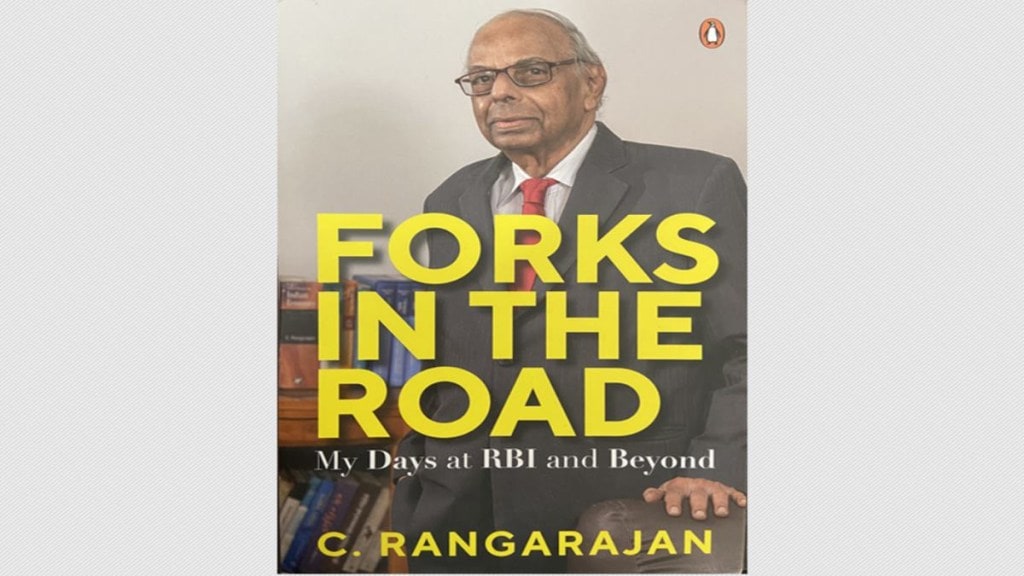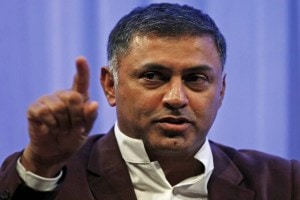It is not just his former students at the Indian Institute of Management (IIM), Ahmedabad but anyone who has ever had a chance to either interact with or listen to Dr C Rangarajan, is bound to have noticed that behind his professorial demeanour, diction and detailing lies an uncanny ability to grasp and stay focused on the core issue. Without long and discursive lectures, in just about 300 pages, Dr Rangarajan in his book, ‘Forks In The Road- My Days at RBI and Beyond,’ captures the most impactful years of a stellar career and an economy in transition.
He begins the book with a question on why write one’s own story at all in the first place. But then, subtly indicating to the reader not to expect many personal elements or anecdotes, he says, “I have tried my best not to project myself as the centrepiece.” To him the book is more of a chronicle of the events and a statement of what happened, what triggered the changes and how the changes were introduced.
Also Read: Book Review: The concept of active defence in China’s military strategy
For those charmed by the drumbeats of digitisation or the unfolding of an era of digital fund transfers and perhaps a future with digital currency, there are reasons to thank the two committees that Dr Rangarajan chaired to lay the foundation for the computerisation of Indian banking industry. He talks of a time when computers were so strongly resisted that even the machines installed were not called computers but were described as “Advanced Ledger Posting Machines” or ALPMs!
Dr Rangarajan’s tenure has also been one that saw concrete measures taken on the path to fiscal responsibility. Negotiating a ‘ways and means advance’ limits was one important step in this direction. Or as Dr Rangarajan puts it in the book:
“The system of issue of ad hoc treasury bills that put no limit on the extent and monetisation of deficit was inconsistent with the reform process.” He took this matter up with the government and an agreement was formally signed on April 1, 1997 “to replace the system of ad hoc treasury bills by ways and means advances to the government of India. It set the limit for ways and means advances at Rs 12,000 crore in the first half of the year and Rs 8,000 crore for the second half. The rate of interest on these advances was to be calculated as rate minus 3 per cent when they were within the limit and an additional 2 percent on overdrafts.”
As would be apparent from the book, Dr Rangarajan was arguably a perfect partner at the central bank for Dr Manmohan Singh, who as the then finance minister was trying to steer the economy from a controlled setting to a more liberalised regime. This needed careful calibration of the monetary policy and an attention to all the crucial elements of financial and monetary management – from deficit financing, inflation to the exchange rate.
He concludes the book by looking at the journey of the Indian economy since the beginning of independence to where it is today and on where it needs to head. For instance, he points out that while the achievement of a $5 trillion economy is a good short-term aspirational goal, it will need a minimum five years of sustained growth of 9 per cent. Even then, he reminds, “at the end of it, India’s per capita income will be only $3472 and we will still be classified as a lower middle income country.” To be classified as a developed country, he says, “the per capita income will have to be at a much higher level and that will take more than two decades of strong growth to achieve it. This is the true challenge we face.”
Dr Rangarajan, 90, though no less cautious and curious even today, credits his son in law Santanu Paul for the book title inspired by the celebrated poem by Robert Frost, ‘The Road Not Taken.” Apparently, the path chosen here has been the high road and that has truly made all the difference.
Forks In The Road: My Days At RBI And Beyond
Author: Dr C Rangarajan
Publisher: Penguin
Pages: 346.
Price: Rs 699/-








